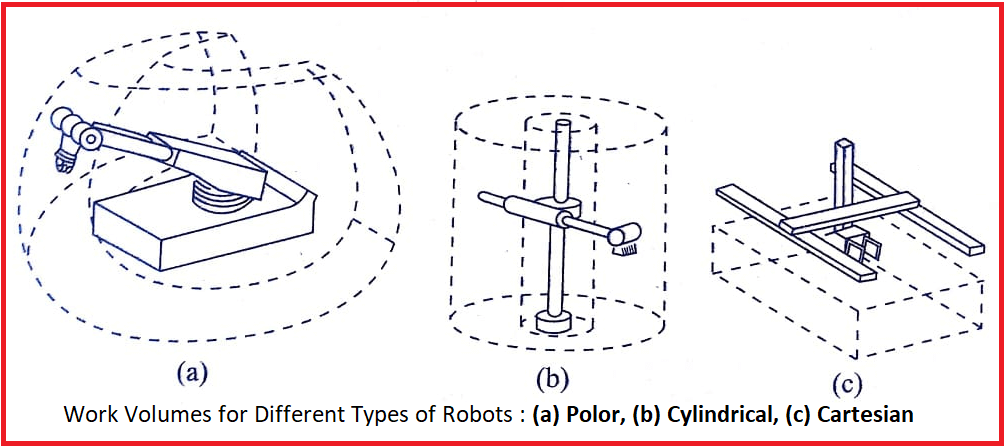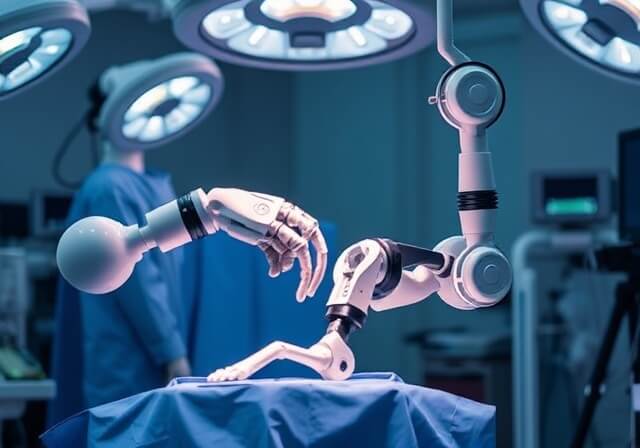Work volume is the term that refers to the space within which the robot can manipulate its wrist end. The convention of using the wrist end to define the robot’s work volume is adopted to avoid the complication of different sizes of end effectors that might be attached to the robot’s wrist.
The end effector is an addition to the basic robot and should not be counted as part of the robot’s working space. Also, the end effector attached to the wrist might not be capable of reaching certain points within the robot’s normal work volume because of the particular combination of joint limits of the arm.
The work volume is determined by the following physical characteristics of the robot:
- The robot’s physical configuration (type of joints, structure of links)
- The sizes of the body, arm, and wrist components
- The limits of the robot’s joint movements

The influence of the physical configuration on the shape of the work volume is illustrated in fig. A polar robot has a work volume that is a partial sphere, a cylindrical robot has a cylindrical work volume.
A Cartesian robot has a work volume that is made of a rectangular shaped space. An anthropomorphic robot has a work volume made up of two or more spheres on the inside and one sphere on the outside.
| Read More Topics |
| Robot drive system |
| Common robot configuration |
| What is a mobile robot? |
| Mechatronics system design stage |





